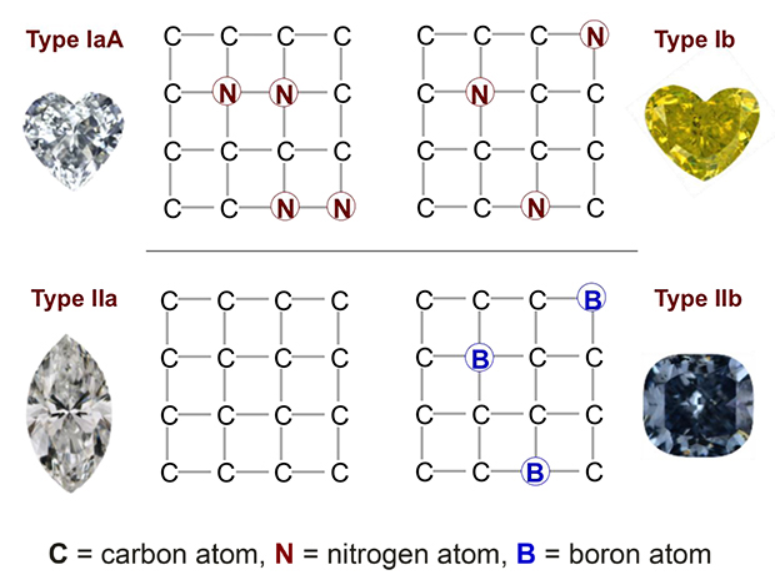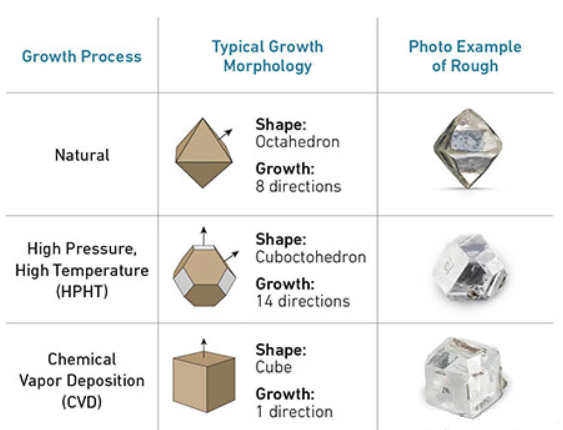Are Lab Grown Diamonds worth the money?
My son is going to pop the question to his girlfriend of 4 years, and naturally, he wants to buy the perfect ring that will serve as a life-long reminder of the bond they share. Like all of us, he wants to buy the highest quality diamond ring for the lowest price. He began researching diamond rings online, and his attention was soon drawn to numerous websites touting the popularity of so called "lab grown diamonds." The underlying message of all these websites is that "lab grown diamonds" are real diamonds and are HALF the price of earth grown diamonds." Without realizing it, my son had unwittingly fallen prey to "blitzkrieg" or "gaslight" marketing that is prevalent online today. I will explain more of what this method of marketing is further on in this article. But suffice to say, unscrupulous marketing practices are very much alive and well on the web!
So, you may be like me and wondering "What the hell is a lab grown diamond?"

Gem-quality synthetic (or lab grown) diamonds are more available in today’s jewelry marketplace than ever before, causing both interest and concern among jewelers about the similarities exhibited and whether it can be identified readily by gemologists or gemological labs. Unfortunately, while synthetic diamonds are lab-grown or factory produced, their chemical and physical properties correspond very closely to those of earth grown or natural diamonds. That where diamond classification comes to the rescue!

Natural diamond crystals formed millions—sometimes billions—of years ago deep in the earth, at depths of 100 miles (160 km) or more, and were brought up to the surface much later by explosive volcanic eruptions.
Beginning in the 1930s, scientists began to recognize that certain kinds of diamonds displayed similar features. They grouped the diamonds into two main categories called type I and type II based on differences in transparency under ultraviolet radiation. Scientists were able to further divide type I and type II diamonds into two subcategories by the arrangement of carbon—and impurity—atoms in the diamond structure. In 1959 they discovered that nitrogen was the principal chemical impurity in diamond and that while type I diamonds contained this impurity, type II diamonds did not. The vast majority of natural diamonds are what scientists call "Type Ia." Type Ia diamonds contain plentiful nitrogen in clusters or pairs (see the picture above how Nitrogen atoms are paired together). This kind of diamond CANNOT be grown artificially.
On the other hand, "Type Ib" diamonds contain scattered and isolated nitrogen atoms that are NOT in pairs or clusters. Type Ib diamonds are rare in nature. Type IIa diamond contain almost no nitrogen, while IIb diamond contains boron. Synthetic diamonds correspond to types Ib, IIa, and IIb, all rare categories among natural diamonds.

Fortunately, over 95 percent of natural diamonds fall into the Type Ia category. This allows for testing by a gemologist using the standard tools of the trade (e.g., a microscope, spectroscope, UV lamp) to make a determination as to the diamonds provenance (lab grown vs natural). But this type of testing would only be 95% conclusive, as some natural diamonds fall into the same Type Ib, IIa, and IIb categories as synthetic diamonds. Testing on the three latter categories requires extremely expensive testing equipment, not available to the average jeweler. Fortunately, over 95 percent of natural diamonds fall into the Type Ia category. This allows for testing by a gemologist using the standard tools of the trade (e.g., a microscope, spectroscope, UV lamp) to make a determination as to the diamonds provenance (lab grown vs natural). But this type of testing would only be 95% conclusive, as some natural diamonds fall into the same Type Ib, IIa, and IIb categories as synthetic diamonds. Testing on the three latter categories requires extremely expensive testing equipment, not available to the average jeweler. So many jewelers would just assume that if you come in with a diamond from the Type Ib, IIa, or IIb category, it might be a a man-made diamond.
Marketing
What role does marketing have on the legitimacy of a product? All products are marketed, legitimate or not. However, extra effort is taken when a product is not a person's natural first choice. For example, type the phrase "are lab diamonds real?" into your search engine. The top results point to articles that promulgate the many benefits of purchasing lab grown diamonds. These are articles are carefully crafted to promote a position and sway your opinion. Some of the proported benefits are of lab grown diamonds are:
- No impact on the environment
- No exploitation of human labor (blood diamonds, child labor, etc)
- 30% to 50% lower cost
- No visible difference between a lab grown diamond and natural diamond (to the naked eye - both are sparkly eye candy)
- Lab diamonds are "real" diamonds (but still can't be marketed as natural)
If there was no way to tell the difference between a lab grown and a natural diamond, the cost of natural diamond would be plummet in the same way that a good conterfeit money would cause the value of money to drop precipitously. Think about it - if people could spend $1.00 and create a genuine-looking $100 bill that couldn't be distinguished from the a real $100 bill, the value of the $100 bill would be one dollar. But that is NOT what is happening in the diamond industry because lab grown diamonds have distinguishing characteristics that allow them to identified as such. And as long as their is a distinction, their value will never surpass that of natural earth grown diamonds. Period.
The real test is the resale value of the lab grown diamond. Most websites hawking them have certification companies (I found one called "IGI